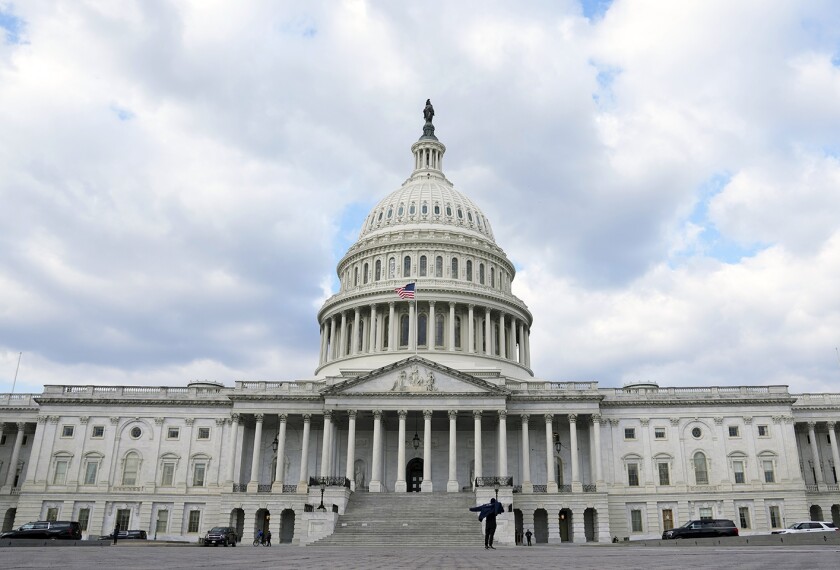A $10 million investment to establish a home visit program in Connecticut is paying dividends.
The program, set up by the state education department in April 2021 with federal COVID-19 relief funds, aimed to personalize districts’ approaches to combating student absences by sending a school employee or community volunteer to families’ homes to help find solutions to problems getting their kids into the classroom.
It took the old-school model of punishing students and families for missing school, and replaced it with one that puts compassion and curiosity first. The approach and its results offer an example as states and school districts attempt to combat chronic student absences that have spiked since the start of the COVID-19 pandemic, as the initial switch to virtual learning and factors such as illnesses, evictions, and schedule disruptions from quarantine and isolation periods have routinely kept kids away from school.
“Truancy labels a student, and it makes a family feel shame, and nothing grows in the garden of shame,” said Kari Sullivan Custer, attendance lead for the Connecticut State Department of Education. “When a truancy officer bangs on your door at dinnertime and threatens you to come to school, that pushes you away from that school. It doesn’t reengage and it doesn’t address the root causes for why the kids are missing school, so we kind of flipped the approach on its head.”
So far, the results have been overwhelmingly positive.
A new report analyzing the program, called the Learner Engagement and Attendance Program (LEAP), suggests the home visits—which targeted about 8,690 chronically absent students in 15 districts across the state—led to significant increases in students’ attendance. Consistent attendance is considered an important factor in helping students recover academically post-pandemic, as national data show students suffered serious setbacks in core subjects like math and reading.
Most students’ attendance rate increased by about 4 percentage points in the month following their home visit. That rate continued to grow in subsequent months.
Nine months after the first home visit, pre-kindergarten through 5th-grade students’ attendance rate increased by 8 percentage points on average. For students in 6th through 12th grades, that increase was an average of 16 percentage points.
The results were mostly consistent, regardless of the students’ demographic or socioeconomic backgrounds, aside from English language learners, whose increase in attendance was about half that of their peers.
Building relationships
Home visitors underwent training, but districts were able to decide which staff members would be best suited to participate or whether to partner with community organizations. Most visits happened in person, either at the families’ homes or at neutral places in the community, such as a coffee shop. Some visits took place over the phone or via Zoom, depending on people’s level of concern about COVID-19, but Connecticut education leaders found in-person visits were most effective.
There was a series of two or three home visits, and the first visit always started with a simple question: “How are you?”
“Before we talk about grades or discipline or academics or attendance, we need to build a relationship, so these visitors often reflect the families and the communities they go to,” Sullivan Custer said. “Once they figure out what’s going on with the family, they can help them untangle some of the things that are holding them back from getting the kids to school.”
Putting in the time to build trust helps families open up and ask for help or talk about challenges they’re facing. A single parent might feel as if they have to choose between getting their kids to school and making it to work on time. Through the home visits, they could learn that there are other parents in the neighborhood willing to lend a hand, or that there is a bus route that runs a couple of streets over.
Other families might be struggling to help their children manage anxiety about going to school after extended time in virtual classes at the height of the pandemic, and school staff can help establish routines that make them feel more settled, or connect them with mental health resources.
Participation was voluntary for families, and not everyone jumped on board right away, especially families who are new to the country or lack proper documentation.
“They can be very fearful, so it’s the home visitors’ job to build trust, understand the importance of school and know they don’t need to worry and their kids are safe in school,” Sullivan Custer said.
Leaders promise long-term investment
Now that they’ve seen positive results, Connecticut education leaders are committed to sustaining and expanding the program in the coming years, even when federal relief funds run dry. They’re hopeful to serve as a model for other states and school districts, especially those that still take a punitive approach to truancy.
Hedy Chang, executive director of Attendance Works, a nonprofit that advocates for policies to improve students’ time at school and helped develop the LEAP program, said the program is a powerful example of what states can do if they gather, analyze, and share student data in real time. Chang said Connecticut was the only state that gathered and published chronic absence data monthly during the pandemic. That data prompted state leaders to invest in home visits, she said.
The results show that data are among the most powerful tools districts have, and that investments in authentic relationship building are paramount to students’ success.
“Districts must invest up front in ensuring families feel a sense of connection, belonging, and support at school and can gain access to needed resources to get to school,” Chang said. “If students don’t show up regularly to school, investments in curriculum, instruction, and expanded learning opportunities are unlikely to make a difference.”






